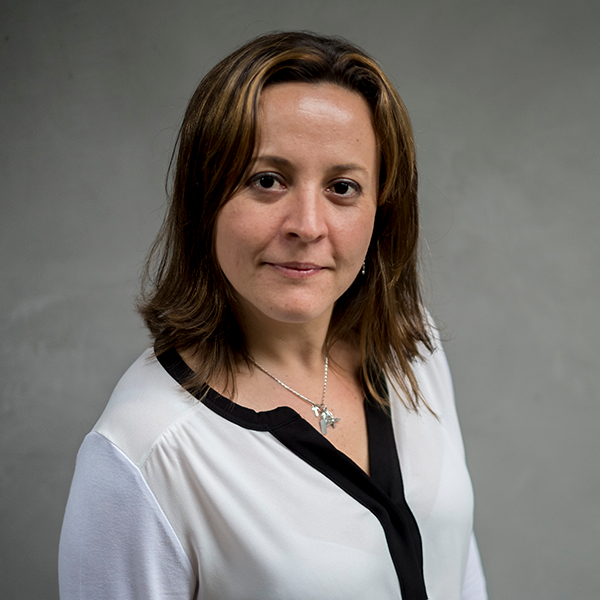The U.S presidential election will take place in 82 days, but fact-checkers from all over the world can already tell that the United States has the ingredients to see a campaign flooded by mis/disinformation. Here are some urgent tips not only for the press but also for voters.
The fact that the polls aren’t showing a leading candidate, with a wide margin of voting intention, has caught fact-checkers’ attention lately.
Although data maintained by FiveThirtyEight regarding the most recent polls show Joe Biden ahead of Donald Trump, the margin between these two candidates is quite small: about 8 percentage points. This means that the leader can change at any time and that the game is still to be played.
But you might ask: Why is the lack of a clear favorite candidate considered a negative factor for mis/disinformation in a presidential campaign? Simple. Politicians who faced the same situation in other parts of the world recently took a common path: They attacked the electoral process and/or cast doubts on the voting system. The chaos that rises in these situations is plagued with falsehoods.
[the_ad id=”667826″]
In 2018, while in the campaign, now-president Jair Bolsonaro openly questioned the electronic voting system adopted in Brazil years before. More than once he repeated that the computer-like machine where Brazilians cast their vote couldn’t be fully trusted and that he feared he would lose the election due to fraud. The machine used to collect votes in Brazil has no connection to the internet and only the Electoral Justice can decode it. There has never been any proof about its vulnerability, but Bolsonaro attacked it anyway.
Following his lead, a group of YouTubers posted a high-quality video mentioning “international studies” that could finally “demonstrate” that the Brazilian presidential election had a 73.14% chance to be defrauded. The video was seen by more than 1.3 million people. Its author was presented as a sheriff and a prosecutor, so lots of voters thought he could be right and started to doubt the Electoral Justice. WhatsApp message chains, Facebook posts and other YouTube videos popped up that amplified that unsubstantiated information. Some days later, the situation worsened and Brazilian police were called to investigate death threats received by the president of the Superior Electoral Court. She was then being openly accused of manipulating the presidential election.
In recent weeks, Trump gave the first signs he is moving in this direction. He questioned mail-in ballots (expanded as a result of the COVID-19 pandemic) and said that this will lead to massive” fraud. On July 31, he groundlessly added that the United States might not “know the election results (of the 2020 presidential election) for weeks, months, maybe years after.” For fact-checkers living in the United States and abroad this is a clear indication of what might come.
It is important to act now. The press needs to publish work capable of putting these conspiracy theories to test. Journalists must also produce explainers, detailing how the electoral process works and how the voting system can be audited. These explainers should not only be detailed and precise but also attractive. During a presidential campaign, the battle is for voters’ attention.
[the_ad id=”667872″]
New topics for polarization
The second ingredient that suggests this year’s U.S. elections will be marked by falsehoods is the high level of polarization seen around various ethical and moral issues.
Immigration, guns, racism and abortion have been polarizing topics in U.S campaigns for decades. In 2020, however, polarization around COVID-19 — such as the mandatory use of masks, the need for social distancing and the way children should (or should not) go back to schools — will ratchet things up.
How does this impact the level of mis/disinformation in an election? Well, it divides society, raises the need for judgment, lowers the ability for the public to engage in dialogue and ushers in more hate.
In the 2019 Argentinean presidential elections, a WhatsApp chain message went viral in an attempt to associate the then candidates Alberto Fernández and Cristina Fernández de Kirchner with a law that supposedly would prevent Argentines from saying the words “mom and dad in schools,” because both terms were to be considered “discriminatory.” A clear example of how the division that usually strikes the gender debate can enter a polarized electoral campaign in a baseless way and hurt not only politicians, but also democracy. Voters ought to be careful.
And all this will surely happen in the virtual world: on social media, instant messaging apps and/or websites. So journalists and fact-checkers will soon feel the urgency to create and promote respectful spaces for conversation. They must explain how algorithms work. The press should be ready to demonstrate — more than ever — that, as of today, algorithms seem to reward extremists more than those who are moderate and trustworthy.
A few days ago, a study from Harvard Kennedy School’s Misinformation Review confirmed a hypothesis held by the fact-checking community. The more interaction a post has on social networks, the less prone a person is to fact-check its content. The rationale — perhaps unconscious — is: “If everyone likes it, then it is probably true and/or correct.”
[the_ad id=”667878″]
What should and shouldn’t be done
It is urgent, therefore, that journalism becomes the counterforce. The press must inform and repeat that, during political campaigns, whoever screams louder is heard — which does not mean he/she has the facts right or is being respectful.
It is also worth drawing the public’s attention to the ways in which they interact with false content when they see one — and here comes a simple media literacy lesson. Never retweet a video with mis/disinformation if you want to complain about its lack of veracity. Never share a manipulated photo, even to report that it is fake.
In the fight against electoral falsehoods, those who can identify misleading content must also take the oxygen out of hoaxes. This means that instead of retweeting a false photo or a manipulated video, you better make a screenshot and, if available, add a link to a fact check about it in an original post.
To notify friends on social networks about an adulterated image, remember it is important to mark up the photo and show others where the falsehood is. Maybe it comes from another city, it is old or something has been deleted or added.
In the next 82 days, extra attention is needed. There will be attempts to discredit the electoral process. People will go wild on social media — not always carrying the truth. Posts might become popular very quickly — which doesn’t mean they are correct — and hate might divide society.
Stopping electoral mis/disinformation and preserving elections as a true expression of citizenship is a task for us all. You can start doing your part right now.
Read the Spanish version at Univision.
* Cristina Tardáguila is the associate director of the International Fact-Checking Network and the founder of Agência Lupa. She can be reached at ctardaguila@poynter.org.
* Laura Zommer is executive director and editor-in-chief at Chequeado. She is also a member of IFCN’s advisory board. She can be reached at lzommer@chequeado.com.







